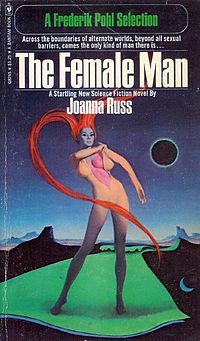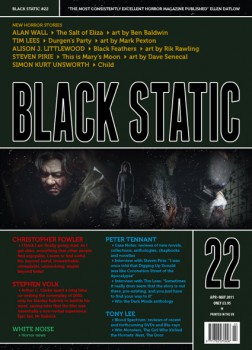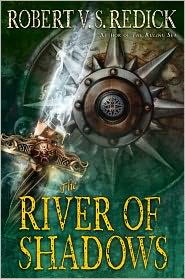 The River of Shadows (Book III of the Chathrand Voyage Series)
The River of Shadows (Book III of the Chathrand Voyage Series)
Robert V.S. Redick
Del Ray (592 pages,$16.00, April 2011)
Reviewed by David Soyka
My purpose here is simply a warning. If you are part of that infinitesimally small [and ever smaller] band of dissidents with the wealth, time and inclination to set your hands on the printed word, I suggest you consider the arguments against the current volume. To wit: the tale is morbid, the persons depicted are clumsy when they are not evil, the world is inconvenient to visit and quite changed from what is here described, the plot at this early juncture is already complex beyond all reason, the moral cannot be stated, and the editor is intrusive. The story most obviously imperils the young.
p. 107-108
There are various reasons for such “editorial” intrusions into a narrative rolling along quite nicely seemingly without need for meta-fictional comment. One is in fact to be meta-fictional, to purposely draw attention to the illusion of storytelling. But, another, opposite tact, is to give the text the illusion of legitimacy, that what we’re reading, however improbable, is an actual historical document. The latter is the approach of the modern über-fantasy, Lord of the Rings, in which the tale is presented as an ancient manuscript edited for a contemporary audience by a medieval scholar.
Given that this was J.R.R. Tolkien’s day-job, this might have been intended as a kind of inside joke, albeit from a guy who wasn’t particularly jokey. In the case of Robert V.S. Redick, whose The River of Shadows, the penultimate volume in the Chathrand Voyage Series, is a sort of Tolkien at sea, he pointedly wants us to be in on the joke.
There are a lot of “paint by the numbers” Tolkien clones for the simple reason that there is a market for people who want more of the same. They’ll probably enjoy this series. But while Redick may be guilty of a little too slavish attention to both fantasy cliché and Perils of Pauline dilemmas resolved by convenient magical cavalry to the rescue, it’s all in good fun. Not the sort of fun that’s saying, “Ew, how stupid all this heroic questing stuff is.” Rather, it’s the sort of fun that’s saying, well, isn’t this all great fun?
Which, it is.
…
Read More Read More
 The June-July 2011 Black Static cover features a still from the film Agnosia and a crop of the artwork by Riki Rawling for V. H. Leslie’s story “Time Keeping.” Here’s the opening paragraph:
The June-July 2011 Black Static cover features a still from the film Agnosia and a crop of the artwork by Riki Rawling for V. H. Leslie’s story “Time Keeping.” Here’s the opening paragraph: The June 20th edition of John Clute’s
The June 20th edition of John Clute’s  Congratulations to Realms of Fantasy on its 100th issue (which actually has 101 pages, but I guess the extra page is for good luck, and doesn’t make for quite the same alliterative headline), a notable accomplishment for a publication that has been brought back from the dead on several occasions. In fact, the magazine has had five publishers, with founding editor Shawna McCarthy the only person who has been there for the duration, according to the issue’s “Little Known Facts.” Fiction contributors include Leah Bobet, Josh Rountree and Samantha Henderson, Sharon Mock, Thea Hutchinson, Patrick Samphire, Euan Harvey and David D. Levine, as well as poetry by Ursula Le Guin and various art, book, gaming and movie reviews along with the regular Folkroots column by Theodora Gass. Here’s the complete
Congratulations to Realms of Fantasy on its 100th issue (which actually has 101 pages, but I guess the extra page is for good luck, and doesn’t make for quite the same alliterative headline), a notable accomplishment for a publication that has been brought back from the dead on several occasions. In fact, the magazine has had five publishers, with founding editor Shawna McCarthy the only person who has been there for the duration, according to the issue’s “Little Known Facts.” Fiction contributors include Leah Bobet, Josh Rountree and Samantha Henderson, Sharon Mock, Thea Hutchinson, Patrick Samphire, Euan Harvey and David D. Levine, as well as poetry by Ursula Le Guin and various art, book, gaming and movie reviews along with the regular Folkroots column by Theodora Gass. Here’s the complete 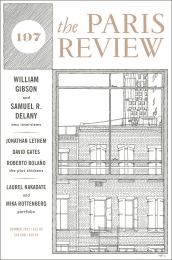 Tastemaker Central take particular pleasure in noting that the latter literary bastion has much of interest to the same people who read the bastion of fantasy genre tales (and perhaps vice versa?). The Summer 2011 features “Art of Fiction” interviews with Samuel R. Delany and William Gibson, as well as a story by Jonathan Lethem, “The Empty Room,” that’s available
Tastemaker Central take particular pleasure in noting that the latter literary bastion has much of interest to the same people who read the bastion of fantasy genre tales (and perhaps vice versa?). The Summer 2011 features “Art of Fiction” interviews with Samuel R. Delany and William Gibson, as well as a story by Jonathan Lethem, “The Empty Room,” that’s available  I’m beginning to wonder when Interzone will be retitled Jason Sanford’s Interzone; the guy seems to snag the magazine’s featured author slot more times than most. Case in point is the May/June issue in which Sanford’s “Her Scientification, Far Future, Medieval Fantasy” gets top billing, “plus other new stories” by Suzanne Palmer, Lavie Tidhar, Will McIntosh and Jon Ingold. I normally find Sanford intriguing, but this is one of those “I’m in an artificial reality, and I find out that I’m not as real (or more than real) as I thought” stories that is okay but doesn’t add much to the trope that hasn’t already been done before. The first paragraph is a real hoot, though, which I felt the rest of the story didn’t really hold up to:
I’m beginning to wonder when Interzone will be retitled Jason Sanford’s Interzone; the guy seems to snag the magazine’s featured author slot more times than most. Case in point is the May/June issue in which Sanford’s “Her Scientification, Far Future, Medieval Fantasy” gets top billing, “plus other new stories” by Suzanne Palmer, Lavie Tidhar, Will McIntosh and Jon Ingold. I normally find Sanford intriguing, but this is one of those “I’m in an artificial reality, and I find out that I’m not as real (or more than real) as I thought” stories that is okay but doesn’t add much to the trope that hasn’t already been done before. The first paragraph is a real hoot, though, which I felt the rest of the story didn’t really hold up to: The River of Shadows (Book III of the Chathrand Voyage Series)
The River of Shadows (Book III of the Chathrand Voyage Series)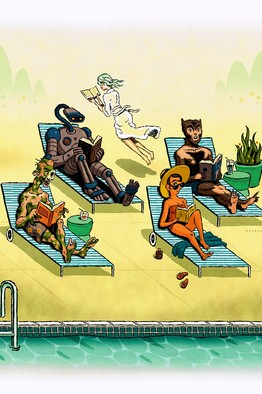 The Wall Street Journal weighs in on the
The Wall Street Journal weighs in on the  No doubt somewhere someone is writing a vampire series based on Hamlet (there is, alas, a
No doubt somewhere someone is writing a vampire series based on Hamlet (there is, alas, a  The second is Cherie Priest’s kickoff of an “urban fantasy” (a term which I take to mean “vampires who live and suck blood in cities”) called
The second is Cherie Priest’s kickoff of an “urban fantasy” (a term which I take to mean “vampires who live and suck blood in cities”) called  I’ve sometimes bought a book without knowing anything about it because it had a cool cover. Similarly, I’ve been drawn to read a story because of a cool title.
I’ve sometimes bought a book without knowing anything about it because it had a cool cover. Similarly, I’ve been drawn to read a story because of a cool title. I first read Joanna Russ as an assignment for a graduate seminar in science fiction. The story was “
I first read Joanna Russ as an assignment for a graduate seminar in science fiction. The story was “